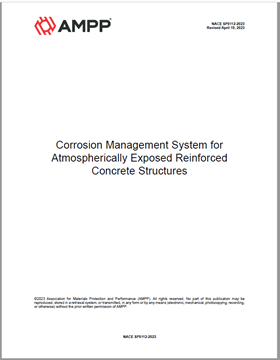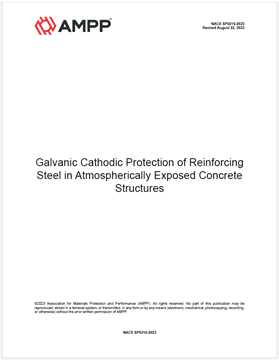Search
Products tagged with 'reinforced concrete'
View as
Sort by
Display
per page
Machine learning based NDT data fusion to detect corrosion in reinforced concrete structures by robot-assisted inspection
Product Number:
51321-16392-SG
Publication Date:
2021
$20.00
Microstructural And Transport Properties Changes In Blended Cement Concrete Resulting From DC Treatments
Product Number:
51323-19124-SG
Publication Date:
2023
$20.00
Monitoring Localized Corrosion Distribution Of Steel Bar In Concrete With OFDR Distributed Optical Fiber
Product Number:
51322-17777-SG
Publication Date:
2022
$20.00
NACE Publication 01101-2018-SG, Electrochemical Chloride Extraction from Steel-Reinforced Concrete -A State-of-the-Art Report
Product Number:
24214-SG
ISBN:
1-57590-386-5
$109.00
NACE Publication 01104-2004, Electrochemical Realkalization of Steel-Reinforced Concrete—A State-of-the-Art Report
Product Number:
24223-HD2004
ISBN:
01104
Publication Date:
2004
$179.00
NACE Publication 21428-2018 - Corrosion Inhibiting Admixtures for Reinforced Concrete-A State of the Art Report
Product Number:
21428-SG
Publication Date:
2018
$109.00
NACE Publication 35201-2001-SG, Technical Report on the Application and Interpretation of Data from External Coupons Used in the Evaluation of Cathodically Protected Metallic Structures
Product Number:
24213-SG
Publication Date:
2001
$109.00
NACE SP0107-2021, Electrochemical Realkalization and Chloride Extraction for Reinforced Concrete
Product Number:
NACE SP0107-2021
Publication Date:
2021
$109.00
NACE SP0112-2023, Corrosion Management System for Atmospherically Exposed Reinforced Concrete Structures
Product Number:
NACE SP0112-2023
Publication Date:
2023
$109.00
NACE SP0216-2023, Galvanic Cathodic Protection of Reinforcing Steel in Atmospherically Exposed Concrete Structures
Product Number:
NACE SP0216-2023
Publication Date:
2023
$109.00
NACE TM0294-HD1994-SG Testing of Embeddable Anodes for Use in Cathodic Protection of Atmospherically Exposed Steel-Reinforced Concrete-HD1994
Product Number:
21225-HD1994
Publication Date:
1994
$179.00
Next Generation Reinforced Concrete Corrosion Modeling With Interdependent Initiation And Propagation Stages
Product Number:
51321-16848-SG
Publication Date:
2021
$20.00












